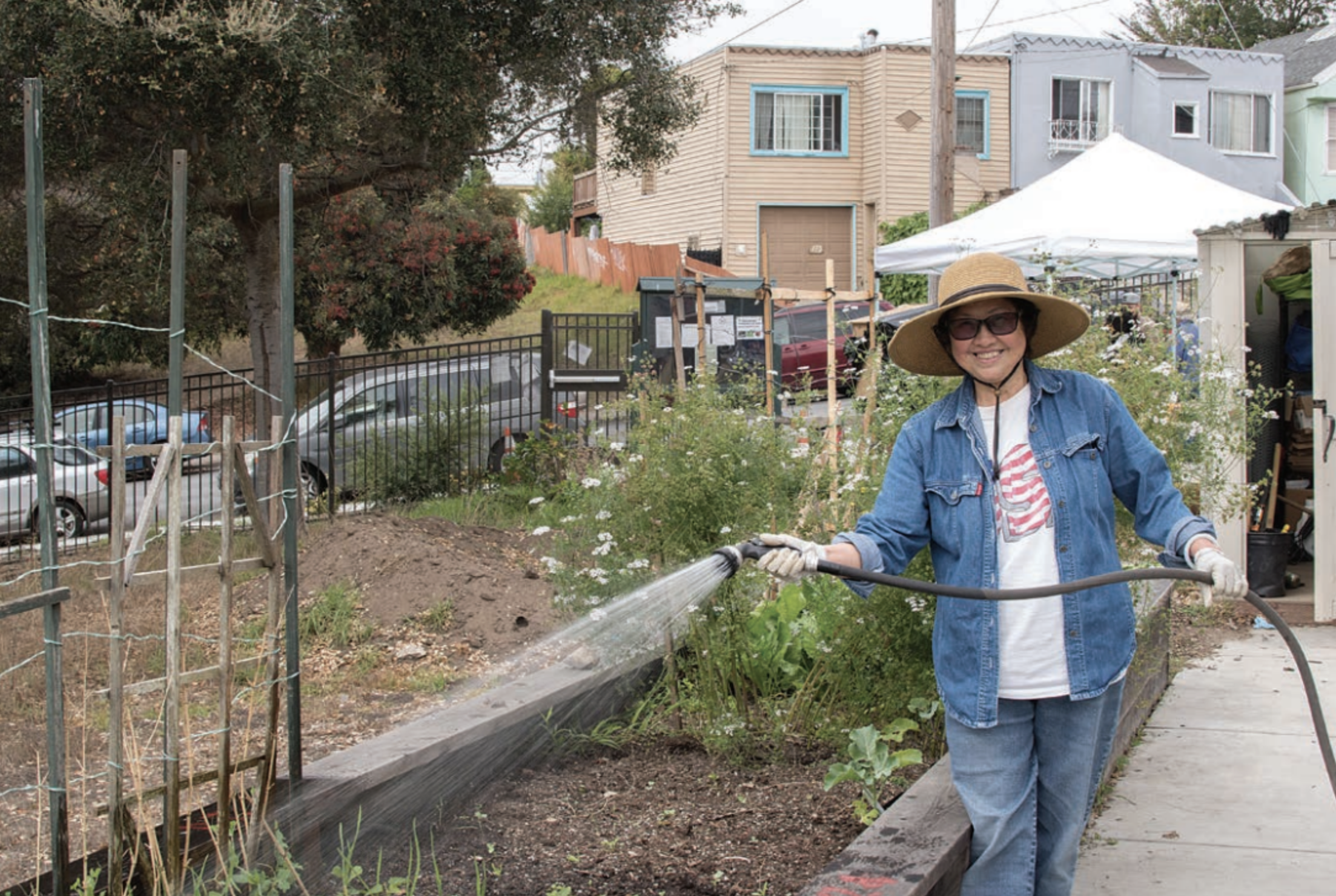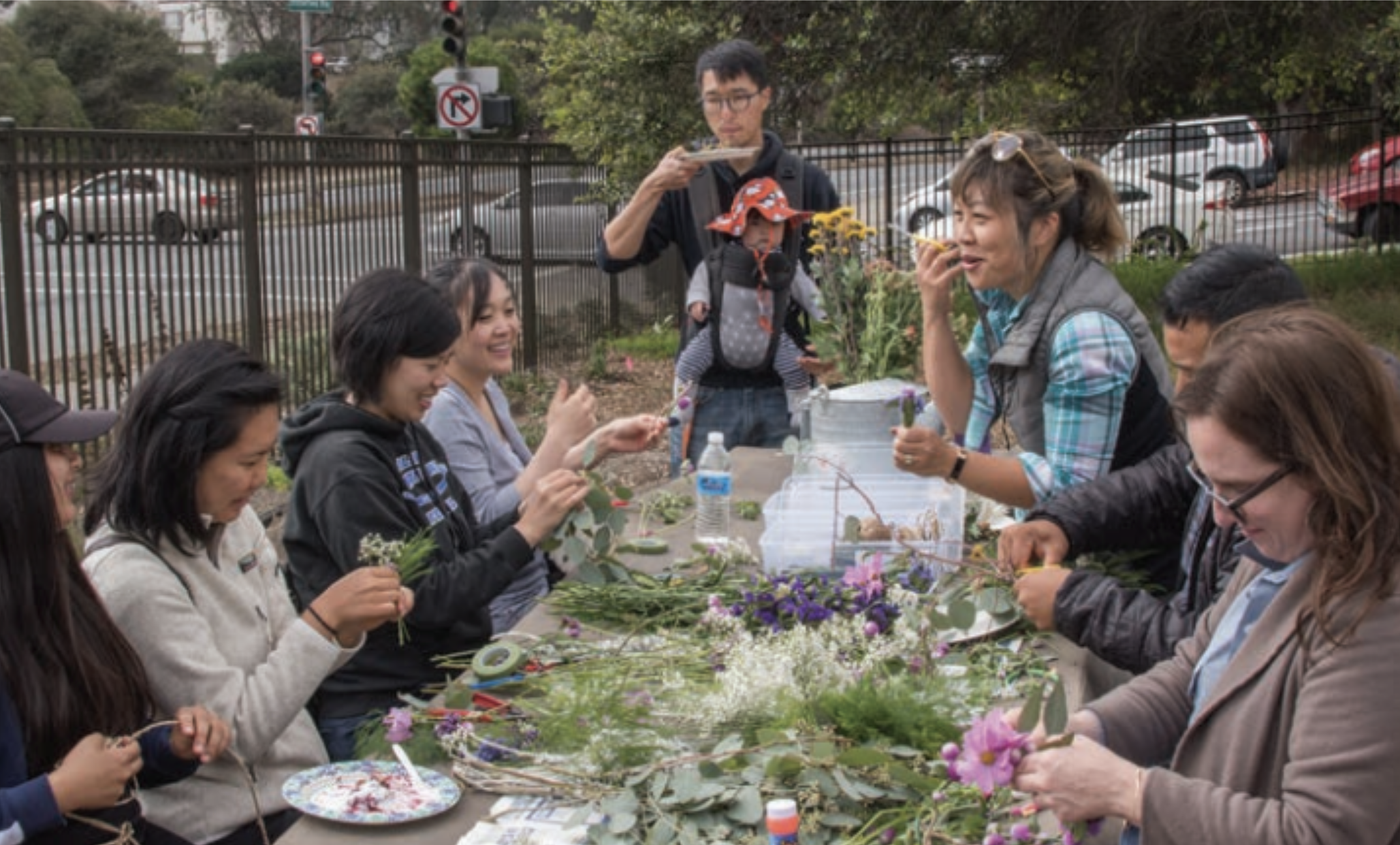Lakeside Village Restaurant To Close On Sunday
The Italian restaurant opened by experienced restaurateurs was no match for slow foot traffic and growing business costs.
The garden directly serves over 30 individuals and their families.

Amid changing stop lights and vehicle traffic at Arch Street, Brotherhood Way and Ramsell Street, Sisterhood Gardens celebrated autumn with a productive fall harvest party on Oct. 13 that featured barbecue and workshops for all ages.
Sisterhood Gardens has been officially open to gardeners and would-be gardeners since June 2017. However, anyone with an interest in learning sustainable practices is encouraged to join its seasonal festivities or get involved with the community year-round for events covering topics such as drip irrigation, seasonal herbs for health and backyard chicken-rearing.
One of its key services is allowing people to rent 4-by-8-foot plots for $30 a year, as long as they grow their plants organically and commit to at least six volunteer days in a year to help maintain Sisterhood Gardens. According to garden coordinator Tiffany Ng, the garden directly serves over 30 individuals and their families.
“What’s unique about our garden is community members grow their cultural foods. They’re growing things you wouldn’t necessarily get at Trader Joe’s and they’re growing them for pennies on the dollar, growing things that they want,” said Jamie Chan, Sisterhood Gardens’ master gardener and garden educator.

Community member and retiree Anna Chen watered her plants before helping herself to the barbecue’s locally grown roasted asparagus. She goes to Sisterhood Gardens daily, and her plot cultivates green onions, garlic and chrysanthemum greens.
“Chrysanthemum greens are perfect for hot pot,” Chen said in Cantonese. “When you grow things yourself, it makes you happy to see the changes little by little.”
Much of the progress made at Sisterhood Gardens happens slowly but surely. Chan’s husband Blas Herrera, a community member and part of the planning committee, specializes in pollinator garden and pollinator house work-
shops.
For the former, he implemented the decision to repurpose an empty plot with higher lead content into a pollinator garden instead of an edible garden.
“Instead of remediating the soil [manually], we decided to turn it into a pollinator garden," Herrera said. "Some plants sequester and remove heavy metals as it’s a part of what they do. Plants like kale and mustard that self-remediate the soil are better overall for the environment.”
For the latter, wooden boxes are filled with different types of dry plant matter for pollinating insects like beetles and bees to find shelter in during winter. Several pollinator houses were built from scratch during the harvest party by Herrera, then painted by him and volunteers both young and old.
Herrera encouraged them to stencil honey bees, dragonflies and butterflies along with centipedes, spiders and scorpions onto the surfaces of the “bug hotels.”
“Creating whole ecosystems is important. When people see, say, dandelions, they see weeds,” Herrera said. “A lot of people don’t know dandelions are a sign there isn’t a lot of nitrogen in the soil. They’re providing something that isn’t there.”
Herrera hopes Sisterhood Gardens is eventually equipped with a clay oven to bake pizzas in, using ingredients sourced from its gardeners: “tomatoes, basil, bell peppers, the good stuff.”
Carolyn Samiere, an attorney who has been a member since 2016, has her own tomatoes and basil plus pak choi, arugula, collards, dill, beets and a cabbage seed given to her from Chan that’s matured in time for Thanksgiving.
“During the peak of growing season, my crops were enough to supply greens for my house and my parents’ house,” Samiere said. “My parsley plants in spring could easily make a huge bowl of tabbouleh.”
Samiere’s experience as a gardener reshaped her grocery store spending habits. Growing her own vegetables reduced the amount she spends per trip.
Fellow gardeners taught her about plants she’s never known about previously, such as pakchoi and different vegetable variants. Samiere has four types of kale.
“What’s really great is we learn from other people. A lot of people have done farming in their home country,” Samiere said. “I watch how they grow things and pick up tips. It’s been wonderful and rewarding, growing vegetables and fruits in
the fog to support a demanding lifestyle.”

She often finishes her workday by picking up things for a dinner salad while catching up with her neighbors, some of whom she’s worked with side by side for over two years. Together, they’ve shared updates on their plants along with past volunteering workloads of constructing irrigation lines.
Everyone reaps a portion the rewards. For Angela Santelices, an OMI resident who was involved with Ng’s summer leadership program Youth MOJO, her efforts with other volunteers in planting trees and building plot beds increased Sisterhood Gardens’ productivity capacity.
Inspired, Santelices rented her own plot the same summer. Her new knowledge on growing cosmos allowed her to provide flowers for the harvest party’s flower crown workshop too. The distinctive pink blooms decorated a number of happy heads aside from her own.
“Sharing is very much a common thing here,” Santelices said. “Gardening is making something your own, and it gives so much relief and happiness.”
As someone who also contributed homemade bread, Santelices enjoys being a hands-on participant as much as possible.
“I do pamper. I do my nails. But I don’t mind getting my hands dirty,” Santelices said. “I know it’s dirt, but the soil here is clean and it’s nutritious for the plants.”
We deliver neighborhood news, events and more every Thursday.